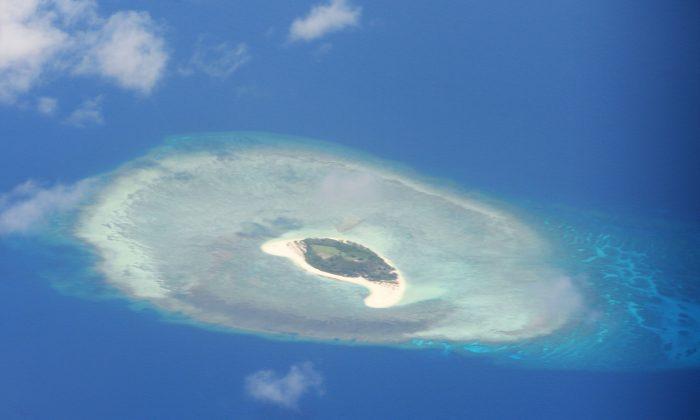WASHINGTON—The United States has raised concerns with China about its latest militarization of the South China Sea and there will be near-term and long-term consequences, the White House said on Thursday.
U.S. news network CNBC reported on May 2 that China had installed anti-ship cruise missiles and surface-to-air missile systems on three outposts in the South China Sea. It cited sources with direct knowledge of U.S. intelligence.
Asked about the report, White House spokeswoman Sarah Sanders told a regular news briefing: “We’re well aware of China’s militarization of the South China Sea. We’ve raised concerns directly with the Chinese about this and there will be near-term and long-term consequences.”
Sanders did not say what the consequences might be.
A U.S. official, speaking on condition of anonymity, said U.S. intelligence had seen some signs that China had moved some weapons systems to the Spratly Islands in the past month or so, but offered no details.
CNBC quoted unnamed sources as saying that according to U.S. intelligence assessments, the missiles were moved to Fiery Cross Reef, Subi Reef, and Mischief Reef in the Spratly Islands within the past 30 days.
They would be the first Chinese missile deployments in the Spratlys, where several Asian countries including Vietnam and Taiwan have rival claims.
China’s defence ministry did not respond to a request for comment. Its foreign ministry said China has irrefutable sovereignty over the Spratlys and that necessary defensive deployments were for national security needs and not aimed at any country.
Julie Bishop, the foreign minister of U.S. ally Australia, said the reports, if accurate, would be a concern as the actions would be contrary to China’s stated aspiration not to militarize the features.
“China, of course, has a unique responsibility as a permanent member of the Security Council, to uphold peace and security around the world,” Bishop told reporters in Queensland. “Any action to militarize unilaterally features in the South China Sea would go against that responsibility and that role.”
CNBC said the YJ-12B anti-ship cruise missiles allowed China to strike vessels within 295 nautical miles. It said the HQ-9B long-range, surface-to-air missiles could target aircraft, drones, and cruise missiles within 160 nautical miles.
Eric Sayers, a former consultant to the commander of the U.S. Pacific Command, called the missile deployment “a major escalation” and said one immediate U.S. response could be to rescind Beijing’s invitation to this year’s RIMPAC multilateral naval exercises beginning in Hawaii in July.
“When China sees that it can get away with these types of actions with little cost—as they did all through 2015 and 2016—it only makes it more likely they will keep pressing,” said Sayers, currently an adjunct fellow at Washington’s Center for Strategic and International Studies.
“China sees its participation in the exercise as a sign of its acceptance among the world’s maritime powers but Beijing should not be allowed to militarize this open maritime domain and still be honored as a welcomed member of the maritime community.”
Last month, U.S. Admiral Philip Davidson, nominated to head U.S. Pacific Command, said China could use its “forward operating bases” in the South China Sea to challenge the U.S. regional presence and “would easily overwhelm the military forces of any other South China Sea claimants.”






Friends Read Free